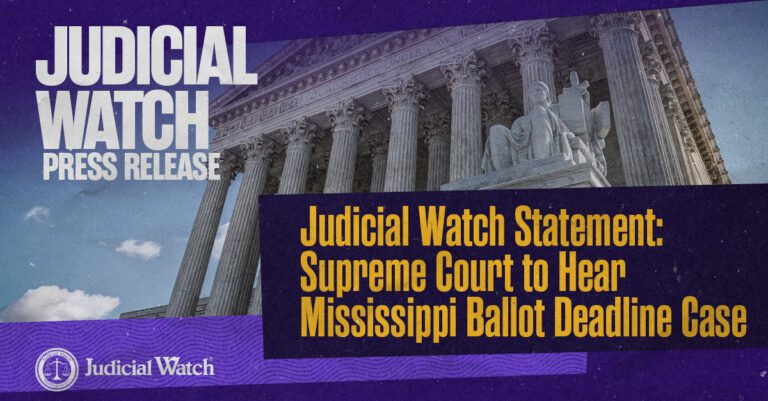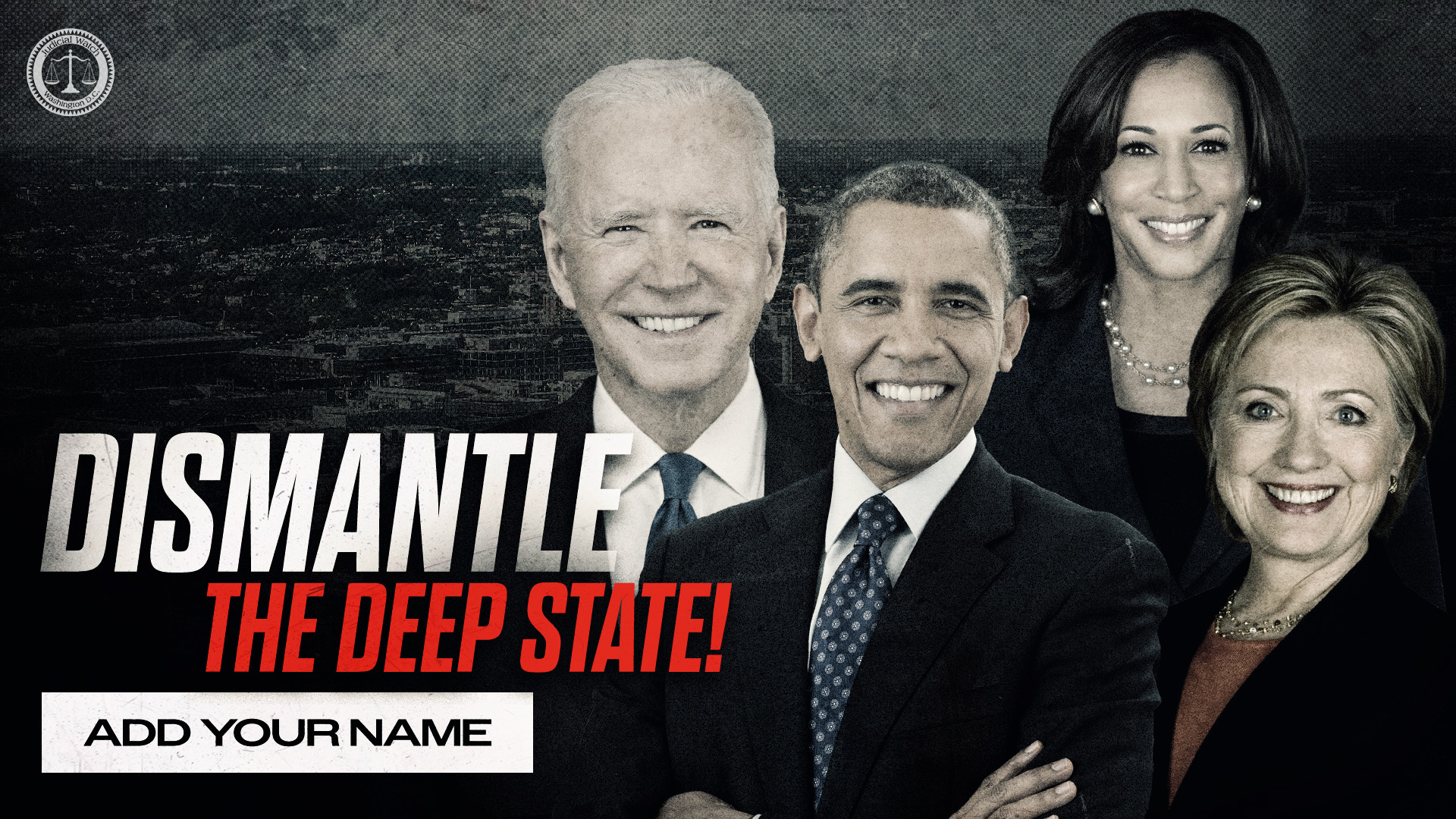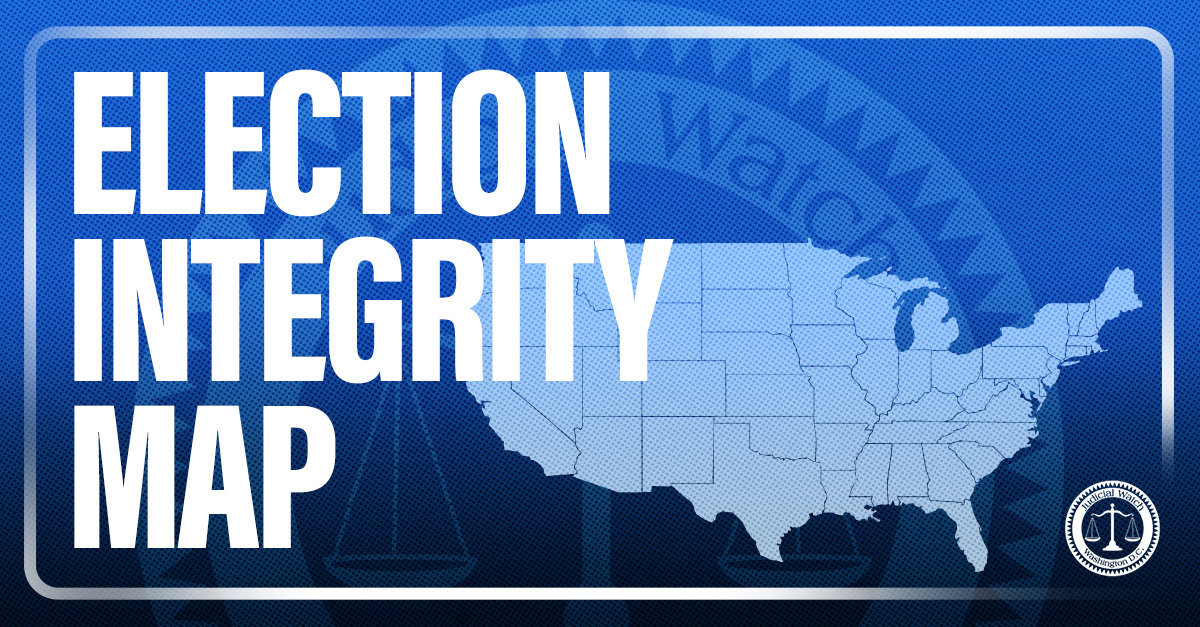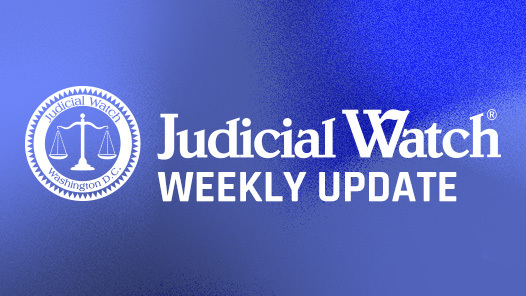
Judicial Watch Warns: Critical Race Theory Rising
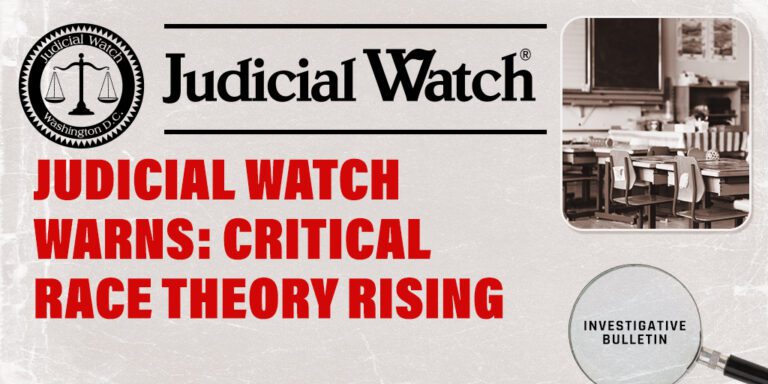
Across America, critical race theory is impacting political battles as the country hurtles toward midterm voting. CRT is the latest front in the war of the far Left against American values, attacking U.S. society as suffused to the core by white supremacy and institutionalized racism and demanding radical change.
Recent Judicial Watch cases reveal how deep CRT has penetrated into the fabric of American life. Judicial Watch was among the first to ring alarm bells over CRT. We noted last year that CRT—long dismissed as an esoteric fad of the academic Left—suddenly was everywhere in the wake of protests over the killing of George Floyd, its agenda advancing swiftly through universities and public schools, government, law, science, business, and the media.
Last month, Judicial Watch President Tom Fitton warned that CRT also is emerging as a threat to national security. Writing in the Washington Examiner, Tom highlighted documents obtained by Judicial Watch under the Freedom of Information Act that painted a disturbing portrait of CRT stoking racial divisiveness at the historic U.S. Military Academy at West Point.
Judicial Watch obtained more than 600 pages of documents revealing CRT instruction at West Point. The documents, Tom notes, “reveal an assault on cadets in the form of race-based shaming that paints one race as an oppressor and another as the victim.”
One West Point training slide is titled “Modern Day Slavery in the USA.” Others state that “whiteness” is a set of “cultural practices that are usually unmarked or unnamed,” and that “white people and people of color live racially different structured lives.” One presentation, “‘Race and the Invisible Hand’: How White Networks Exclude Black Men from Blue-Collar Jobs,” suggests an ongoing program of white oppression.
And apparently it’s not just West Point. In June, the Federalist reported that the U.S. Navy had issued an instructional video on how service members must use “correct pronouns” and “inclusive language” and not “misgender” others. In July, Judicial Watch filed a lawsuit against the Department of Defense after it failed to respond to requests for U.S. Naval Academy records related to CRT.
Elsewhere in the Biden Administration, the Consumer Financial Protection Bureau is busy with a CRT-inspired program to ferret out “race and gender microaggressions.” A Judicial Watch FOIA action revealed a CFPB Power Point training presentation to help employees “identify race and gender based microaggressions” and understand how microaggression can turn into “discrimination and/or unlawful harassment.”
Microaggressions are defined in the CFPB documents as “verbal and nonverbal behavior” that “communicate negative, hostile, and derogatory messages to people rooted in their marginalized group membership (based on gender, race, ethnicity, religion, sexuality, etc.)” Microaggressions can be “intentional or unintentional,” and are “more subtle” than “using racial epithets or displaying swastikas.”
According to the document, example of racial microaggressions include question like: “Where are you from?”, or “Where were you born?” Or asking an Asian American or Latino American to teach them words in their native language. Or saying, “You are so articulate” or “Everyone can succeed in this society, if they work hard enough.” The list goes on.
“Federal agencies shouldn’t abuse tax dollars for CRT indoctrination, which makes a mockery of serious race and sex discrimination issues,” Judicial Watch’s Fitton noted. “This document from the Consumer Financial Protection Bureau shows critical race theory is alive and well in the Biden administration.”
But the main battlefront in the war over CRT and related race-based initiatives is in the schools. With a pushback gaining traction in many communities, Bloomberg reports that 42 states have “introduced bills or taken steps” to address the influence of CRT in education. In Florida, in late August, once-sleepy school board elections revealed electrified parents and big wins for anti-CRT forces.
On August 2, Judicial Watch filed a friend-of-the-court brief, in partnership with the Allied Educational Foundation, in support of a challenge to race-based admissions at the prestigious Thomas Jefferson High School in Fairfax County, Virginia. We asked a federal appeals court to uphold a lower court finding that a new admissions policy of the Fairfax County Public Schools system was unconstitutional because of improper considerations of race.
We noted in our brief, “the truth is that Fairfax County Public Schools was not interested in improving Thomas Jefferson High School diversity”—the stated claim of the new policy. “Thomas Jefferson’s student body was already diverse.”
But for CRT activists in Fairfax County, the status quo at a diverse, successful school wasn’t enough. What was really behind the sudden policy change? The Fairfax school system was seeking “to change the racial mix by increasing the representation of underrepresented, preferred minorities (Blacks and Hispanics) to the disadvantage of other minorities (Asian Americans).” Read more about the case here.
In the District of Columbia, meanwhile, Judicial Watch exposed a 2021 effort by local public schools to create “affinity spaces” segregated by race and sexual identity. We obtained 190 pages of records showing how CRT informed actions by DC public school officials.
Affinity spaces are straight out of the CRT political reeducation playbook. The “goal of these affinity groups,” says one document, an email between two senior school officials “is to create a safe space among colleagues to process the impacts of racism and white supremacy within our school community and identify collective actions to take as individuals and as groups.”
Another document asks public school staff, “Which racial affinity group(s) do you plan to join?”—a not subtle warning to get with the program.
Another document seeks to divide people into “new LGBTQIA+ ‘Affinity Spaces,’” including “BIPOC (Black/Indigenous/People of Color) LGBTQIA+” and “White LGBTQIA+.” Some “Guiding Norms” for affinity spaces included “Go beyond celebration,” “Isolate race,” and create a “Lens for equity.”
In Massachusetts, Judicial Watch brought a civil rights lawsuit on behalf of David Flynn, a high school football coach fired after raising questions about CRT in his daughter’s seventh grade history class.
Among Coach Flynn’s concerns: the course curriculum had been changed without providing parents an opportunity for review and comment; the new course contained material on politics, race, gender, equity, and diversity that were inappropriate for seventh graders age 12 and 13; the teacher was not teaching the material objectively and was promoting the controversial Black Lives Matter movement; and the teacher used course material that portrayed all police officers as risks to all black people, and all black males as risks to white people.
Coach Flynn sent a polite email to school authorities asking for compromises and modest changes to the new curriculum. Their response? You’re fired.
Judicial Watch sued school authorities in federal court. A judge dismissed case, we appealed the decision, and last month, a historic settlement was reached. In a letter to Coach Flynn, school authorities noted that “your legitimate questions prompted additional conversations at the School Committee level that ultimately led to the establishment of a Curriculum Advisory Committee that now brings together parents, community members, and district educators to broadly review and more thoroughly communicate curriculum changes and concerns.” Policy changes included a ban on promoting Black Lives Matter to students in classrooms and online. Read more about the Flynn case here.
How much will CRT impact the upcoming midterm elections? As Judicial Watch reported during last year’s Virginia gubernatorial campaign, the media, liberals, and the Left are dismissive of concerns about CRT. Former Virginia governor Terry McAuliffe, in a trope widely deployed by the Left, said concerns over CRT are nothing more than a “racist dog whistle.” Axios managing editor Margaret Talev said on CNN: “Let’s just say for the record in case anyone doesn’t know, they don’t teach Critical Race Theory to kids in kids K-12 schools. That’s not a thing anywhere in the country, including Virginia.” The claim was repeated elsewhere on CNN. It was dogma at MSNBC.
It was also dead wrong. It turned out in fact that CRT was a big thing in Virginia, and that CRT teachings were widely influential in the Virginia school system. The controversy over CRT had a major impact on the Virginia race. On his first day in office, newly elected Governor Glenn Youngkin, fulfilling a campaign promise, signed an executive order banning “inherently divisive concepts,” including CRT, in Virginia public schools.
Whether the Virginia experience will be repeated in the broader contours of the midterm elections remains to be seen. But the evidence is clear: fights over CRT are impacting communities across the country.
***
Micah Morrison is chief investigative reporter for Judicial Watch. Follow him on Twitter @micah_morrison. Tips: [email protected]
Investigative Bulletin is published by Judicial Watch. Reprints and media inquiries: [email protected]











